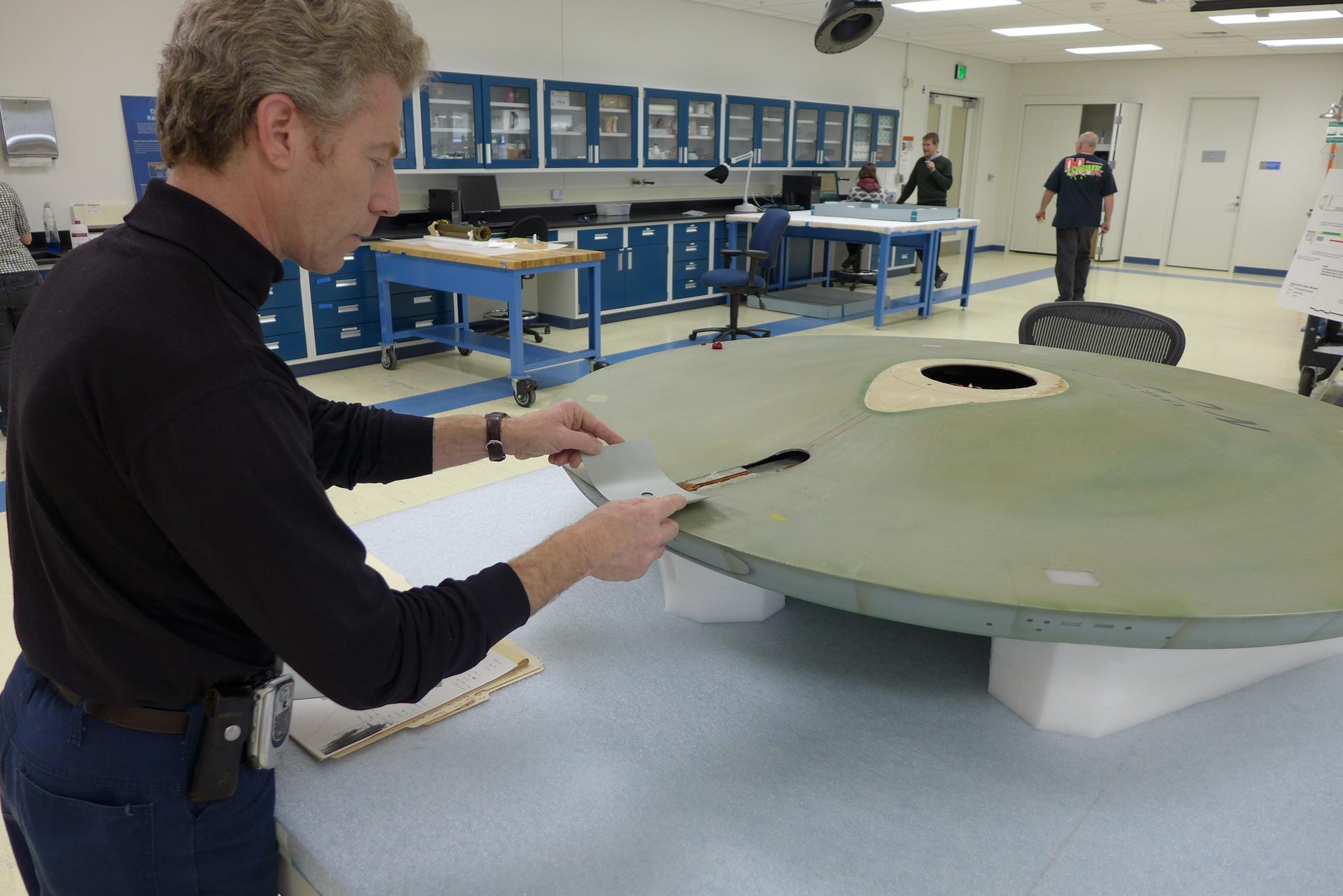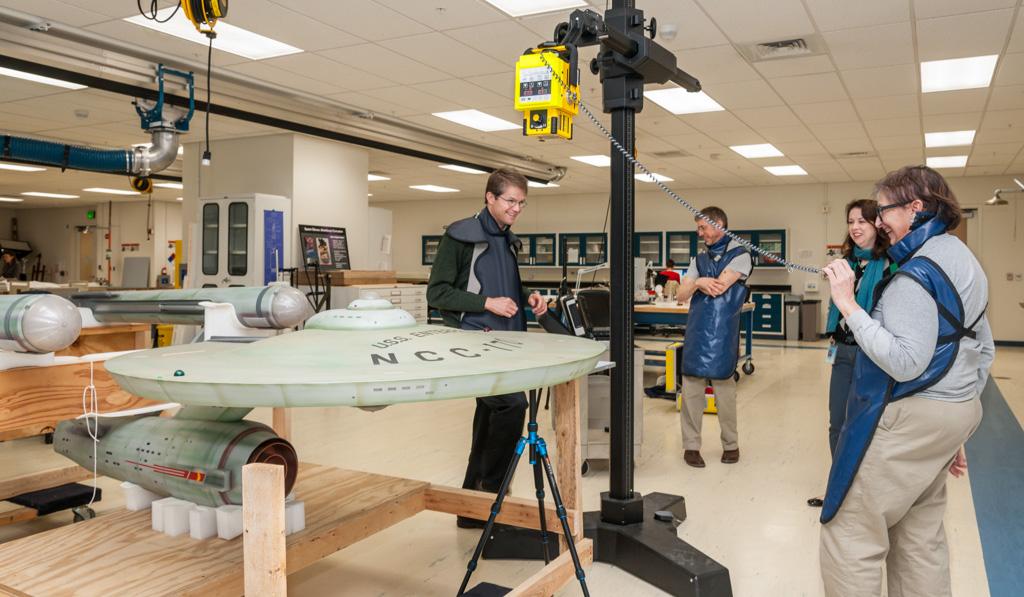Boldly going where no TV prop has gone before
Conservator Ariel O’Connor uses X-ray fluorescence spectrometry to determine what metal alloy was used to construct the port engine of the Enterprise model
Margaret Weitekamp is Curator of the Social and Cultural Dimensions of Spaceflight at the Smithsonian National Air and Space Museum and has a collection of more than 4,000 pieces of space-related ephemera to show for it. And Weitekamp’s principal obsession not long ago was an object that may resonate more deeply than anything else in museum’s collection, at least for the generation that grew up when America was going to the moon.
Weitekamp and a team of conservators worked for 17 months in a room inside a Smithsonian facility in Virginia on the studio model of the Starship Enterprise from the original series of “Star Trek” — the very ship you saw fly by whenever you heard William Shatner say the words, “Space! The final frontier.”
The Smithsonian got the ship six years after NBC canceled the original “Star Trek” in 1969. They had it out on the main museum floor for a while, but for a long time, it was hanging in the gift shop. Weitekamp said the museum heard from a lot of “Star Trek” fans who considered it a sign of disrespect that the Enterprise was hanging there next to the tchotchkes and refrigerator magnets, and she wanted to move it. “I had been looking for a new place for it for some time,” she says, “But it needed to be a permanent place where it would be well contextualized with other objects.”
She finally found that place and it’s the most eminent one in the museum. The entryway of the Milestones of Flight Gallery, home to all of American history’s most important planes and rockets — the very first thing that 7 million people a year see as soon as they walk into the museum. With the “Star Trek” model there, she says, “We could put the Enterprise model next to the Lunar Module, which is in some ways a contemporary spacecraft. We could put it next to the Telstar Flight Spare, which is the first telecommunications satellite and begins this world of television and communication.”

Before taking its rightful place of honor, the model required a visit to the workroom table, where conservators worked on a whole series of structural and aesthetic problems with the model. They cleaned and stabilized the iconic letters spelling out the ship’s full name, “U.S.S. ENTERPRISE NCC-1701,” emblazoned on the top saucer and they had to find ways to address the aging glue that held the engineering hull together, among other things.
“The museum listens carefully to fans of ‘Star Trek’ in part because we're also fans of ‘Star Trek,’” Weitekamp says. “In fact, 20 years ago, the very first gift that my husband ever gave me was a little Lt. Worf figurine that he picked up when he was in Los Angeles. Being able to put those kinds of cultural objects on display allows the museum to really deepen the stories of the science and technology.”

(Originally aired April 7, 2016)
